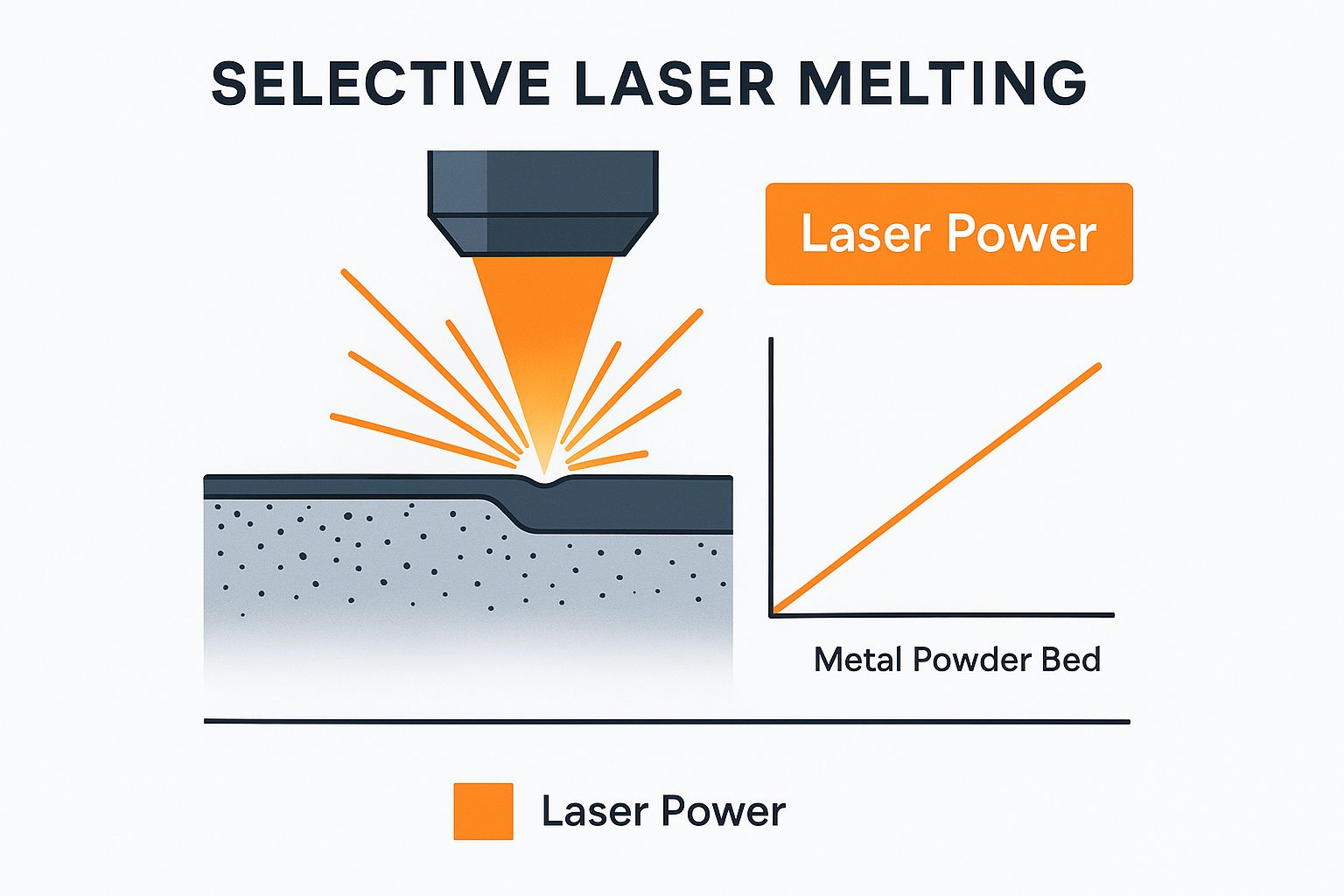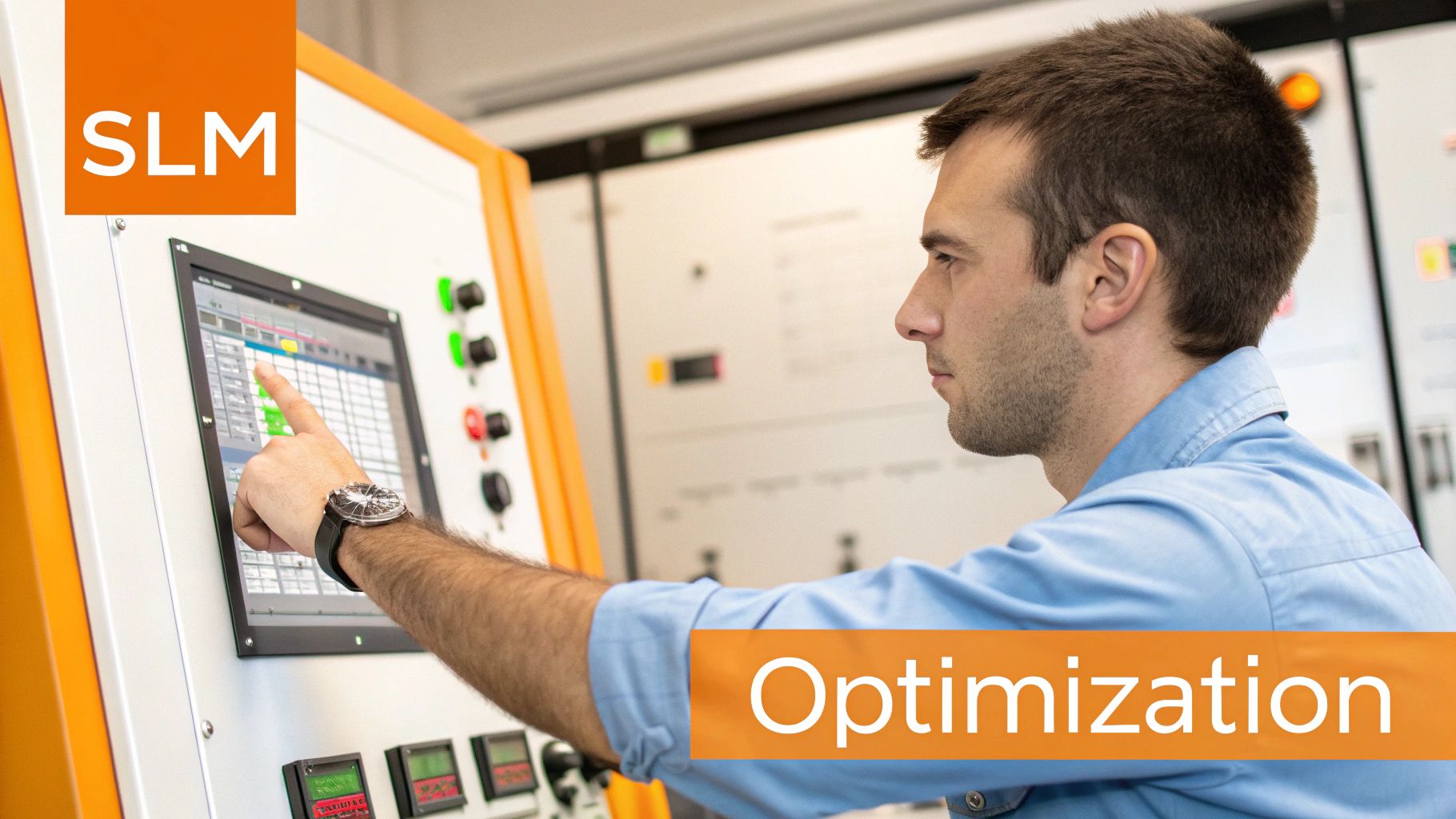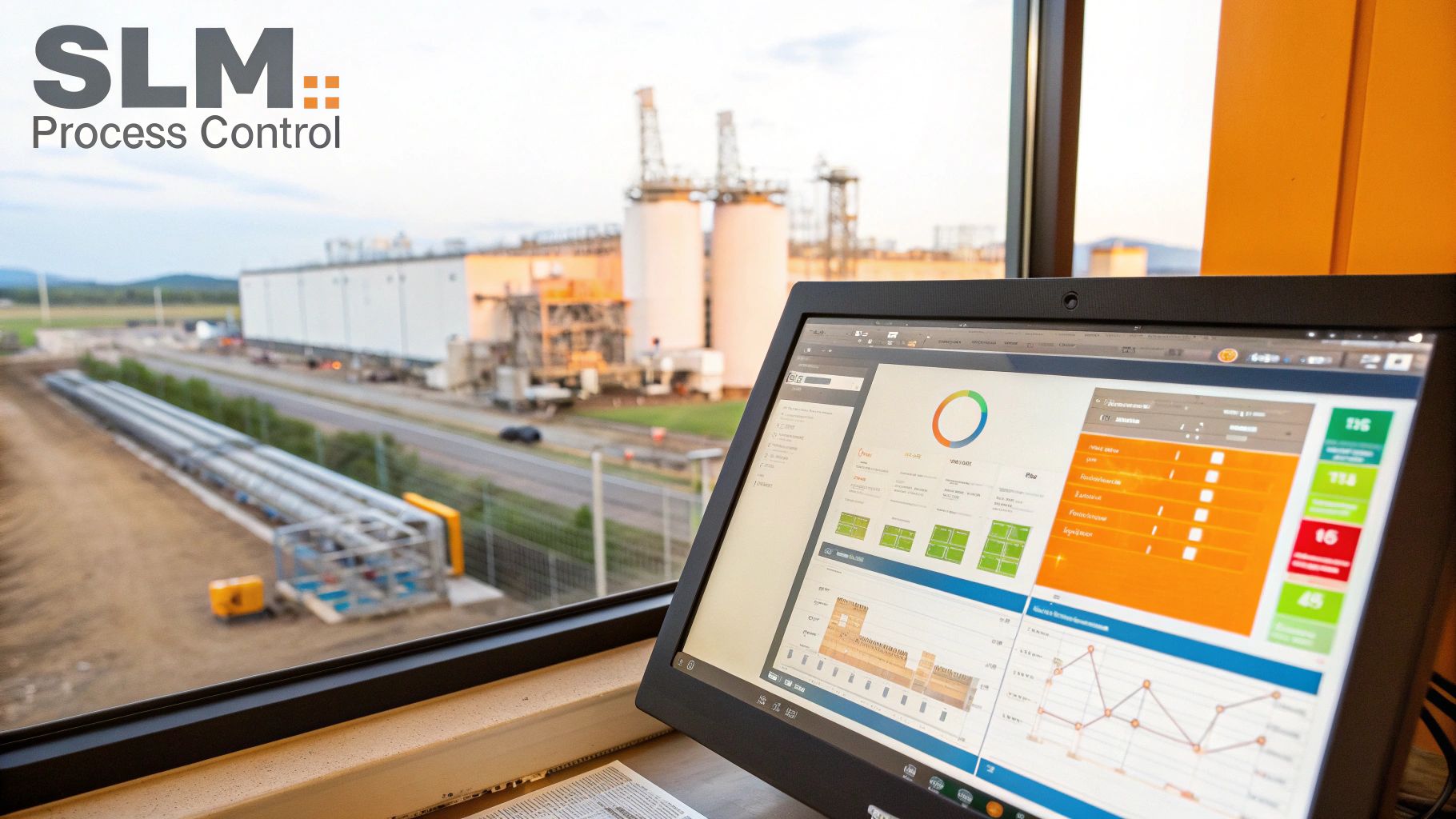The Hidden Power of SLM Process Parameters
Selective Laser Melting (SLM) is a science, not magic. At its core is the precise interaction of SLM process parameters. These parameters determine the final quality, strength, and even the possibility of successfully creating your 3D-printed parts. Understanding these parameters unlocks SLM's full potential, allowing you to move beyond simply avoiding defects and achieve truly high-performance results.
Four Pillars of SLM Parameter Control
These crucial parameters fall into four fundamental groups:
-
Laser Parameters: These parameters control the energy delivered to the powder bed, much like adjusting the flame on a welding torch. Key parameters include laser power, spot size (the laser beam's diameter), and pulse characteristics (how the laser energy is delivered). Higher power melts more material faster, while a smaller spot size allows for finer details.
-
Scanning Strategies: These parameters dictate the laser's movement across the powder bed, similar to choosing brushstrokes for a painting. Scanning speed, pattern (like stripes or a chessboard), and spacing (hatch distance) significantly impact the part's microstructure, thermal stresses, and overall quality. A faster scan speed may increase build rate but could compromise density. You might be interested in: How to master SLM parameters
-
Powder Bed Fundamentals: The powder bed is the foundation of your SLM creation. Layer thickness, particle size distribution, and the material's flowability all play crucial roles. Selective Laser Melting (SLM) is a precise additive manufacturing technique. A key aspect is the layer thickness, typically ranging from 20 to 100 micrometers. This level of precision allows for highly detailed structures, essential in industries like aerospace and automotive where weight reduction and strength are paramount. In aerospace, SLM enables the creation of lightweight parts with complex geometries, potentially reducing fuel consumption and greenhouse gas emissions. Layer thickness impacts both build speed and resolution – thinner layers increase build time but offer a superior surface finish and enhanced mechanical properties.
-
Environmental Controls: The environment inside the SLM chamber is more critical than you might think. Chamber temperature, oxygen levels, and gas flow patterns influence the melting process and can help prevent defects. Maintaining a consistent temperature, for instance, helps avoid warping and residual stresses.
The Importance of Parameter Optimization
Why is mastering these parameters so crucial? They directly influence the final part's:
-
Density: Achieving near-full density is often a primary goal in SLM to ensure the part possesses the required mechanical properties.
-
Surface Finish: The correct parameters can yield smooth, high-quality surfaces, minimizing post-processing needs.
-
Mechanical Properties: Parameters affect the material's microstructure, directly impacting its strength, ductility, and resistance to fatigue.
-
Build Speed: Parameter optimization can reduce build time without sacrificing quality.
Ultimately, controlling SLM process parameters is about balancing speed, quality, and cost. It's the key difference between a basic functional prototype and a high-performance final product.
Laser and Scanning Parameters: Where Quality Begins
The success of Selective Laser Melting (SLM) depends on the precise interaction between the laser and the material. Correctly setting these SLM process parameters is crucial for achieving high-quality parts. It's this careful balance of laser power, scanning speed, and energy density that leads to perfectly formed components.
Laser Power and Scanning Speed: A Balancing Act
Laser power determines the energy input to the powder bed. Higher power results in faster melting and deeper penetration. However, too much power can cause problems like vaporization and keyholing, which compromise the part's structural integrity. Scanning speed, conversely, controls how long the laser stays focused on a specific area. Slower speeds allow for more complete melting, but they also increase build time. The key is finding the right balance between these two parameters.
Energy Density: The Key to Consistent Melting
Energy density, a critical factor in SLM, results from the interplay of laser power and scanning speed. Insufficient energy density can prevent complete powder melting, leading to porous and weak parts. Conversely, excessive energy density risks the previously mentioned vaporization and keyholing defects. Consistent melting and optimal part quality rely on maintaining the correct energy density.
Hatching Strategies: Influencing Microstructure and Stress
Hatching describes the path the laser follows as it scans across the powder bed. Common strategies include stripe, chessboard, and island patterns. Each hatching strategy affects the material's microstructure, thermal stresses, and ultimately, the mechanical properties of the finished part. For example, a chessboard pattern can minimize residual stresses compared to a simple stripe pattern.

Spot Size and Focus: Fine-Tuning for Precision
Spot size, the diameter of the laser beam, affects the resolution and precision of the SLM process. Smaller spot sizes enable finer details and tighter tolerances. The focus position, the point where the laser beam converges, is equally crucial. Precise focus control ensures optimal energy delivery and minimizes variations in melt pool size. These seemingly small adjustments can significantly improve surface finish and dimensional accuracy.
SLM process parameters heavily influence a part’s mechanical properties and microstructure. Parameters such as laser power, scanning speed, and hatch spacing affect porosity, tensile strength, and corrosion resistance. For example, increasing laser power can improve melting depth, which reduces porosity but may increase thermal distortion. Adjusting scanning speed can enhance surface quality but may impact build rate and ductility. Studies show that optimizing these parameters can improve tensile strength by 25% for certain alloys, highlighting the importance of parameter optimization in SLM. Learn more about the influence of SLM technological parameters: https://pmc.ncbi.nlm.nih.gov/articles/PMC7143298/
Visualizing Parameter Impacts: A Data Chart
The following data chart shows the impact of various scanning speeds on the surface roughness (Ra) of a 316L stainless steel part created using SLM.
| Scanning Speed (mm/s) | Surface Roughness (Ra, µm) |
|---|---|
| 500 | 12 |
| 750 | 10 |
| 1000 | 8 |
| 1250 | 11 |
| 1500 | 14 |
This chart reveals that surface roughness initially decreases as scanning speed increases, reaching its lowest point at 1000 mm/s. Past this speed, roughness increases again. This highlights the need to find the optimal scanning speed for a given material and desired surface finish.
To further illustrate key laser and scanning parameters, let's examine the following table:
Key Laser and Scanning Parameters in SLM
A comprehensive comparison of critical laser and scanning parameters showing their typical ranges, effects on part quality, and optimization considerations.
| Parameter | Typical Range | Effect on Part Quality | Optimization Considerations |
|---|---|---|---|
| Laser Power | 100-500 W | Affects melt pool depth, and can cause vaporization or keyholing if too high. | Balance with scanning speed to achieve desired energy density. |
| Scanning Speed | 200-2000 mm/s | Influences surface roughness and build time. Too fast can lead to incomplete melting. | Optimize for desired surface finish and build time. |
| Spot Size | 20-100 µm | Determines feature resolution and precision. | Smaller spot size for finer details. |
| Hatch Spacing | 20-80 µm | Affects density and mechanical properties. | Optimize for desired density and mechanical properties. |
| Layer Thickness | 20-100 µm | Influences surface finish and build time. | Thinner layers for better resolution but longer build times. |
This table summarizes the critical laser and scanning parameters in SLM and their impact on part quality. Optimization requires a balanced approach, considering the desired outcome and potential trade-offs.
Mastering the Powder Bed: The Foundation of Success
While the laser often steals the show when discussing Selective Laser Melting (SLM), anyone with experience knows that the powder bed plays a crucial role in a successful build. This section dives into the critical aspects of the powder bed and how its characteristics influence the quality of the final part.
Layer Thickness: Balancing Speed and Quality
Layer thickness is a fundamental SLM process parameter directly impacting build speed, surface finish, and the part's overall mechanical integrity. Imagine constructing a brick wall: thinner bricks take more time to lay but create a smoother, more precise wall. Similarly, thinner layers in SLM improve surface quality and can enhance mechanical properties thanks to the finer microstructures they produce. However, this precision comes at the cost of increased build time and expense. Thicker layers speed up the build but may compromise surface finish and resolution. The sweet spot for layer thickness lies in balancing these competing factors based on the specific application.
Powder Selection: Particle Size and Flow Matter
The powder itself is just as crucial as the layer thickness. Particle size distribution and flowability are two key properties that influence the part’s density and performance. Think of pouring sand into a mold: fine sand packs tightly, while coarse sand leaves gaps. This same principle applies to SLM. A well-controlled particle size distribution ensures uniform packing density within the powder bed, leading to denser parts with reduced porosity. Powder flowability determines how easily the powder spreads across the build platform during each layer. Poor flowability can cause uneven distribution and inconsistencies in the final part. Choosing the right powder is, therefore, essential for optimal SLM results.
Controlled Environments: Essential for Defect Prevention
The environment inside the SLM chamber is often overlooked but plays a critical role. Chamber temperature, oxygen levels, and gas flow patterns aren't just optional extras; they're vital for preventing defects that can't be fixed with post-processing. A baker’s oven is a good analogy: temperature and airflow greatly affect the final product. In SLM, controlling these parameters ensures a stable and predictable melt pool, preventing problems like oxidation, porosity, and warping. Minimizing oxygen is particularly important for reactive materials like titanium, where even trace amounts can embrittle the part. Consistent chamber temperature minimizes thermal stress and helps prevent distortion during the build.
Actionable Parameter Recommendations
While the best SLM process parameters depend on the material and desired outcome, here are some general guidelines:
-
Start with a medium layer thickness (e.g., 50 µm) and adjust based on your specific needs for surface finish and build speed.
-
Choose powders with a narrow particle size distribution and good flowability for consistent packing density.
-
Maintain a low-oxygen environment in the chamber and carefully control chamber temperature and gas flow patterns for a stable melt pool and defect prevention.
By understanding how these parameters interact and implementing best practices, you can build a strong foundation for successful SLM and consistently produce high-quality parts.
Beyond Trial and Error: Advanced Parameter Optimization

Optimizing SLM process parameters has traditionally been a lengthy and expensive endeavor, often relying on trial and error. However, the rise of computational methods is changing this landscape. Manufacturers now have more efficient and precise tools to pinpoint ideal parameter combinations, moving beyond basic experimentation towards predictable and controlled processes. For a deeper dive into SLM, check out our guide on mastering SLM.
The Rise of Machine Learning in SLM
Machine learning algorithms are becoming increasingly important for predicting optimal SLM process parameters. These algorithms can analyze extensive datasets from past builds, discerning patterns and relationships between parameters and results. This data-driven approach allows for the prediction of optimal parameters with remarkable accuracy, minimizing the need for extensive testing and saving valuable development time. For instance, an algorithm can learn the optimal combination of laser power and scanning speed that consistently produces high density for a specific material.
Virtual Validation with Digital Twins and Simulations
Digital twins and melt pool simulations offer a robust way to test and validate SLM process parameters virtually. A digital twin is a virtual model of a physical part and the SLM process itself. This allows engineers to simulate the build process with various parameter sets and predict the final part's quality without consuming physical materials or machine time. Melt pool simulations model the intricate behavior of the molten metal during the SLM process, providing insights into how different parameters influence melt pool size, shape, and temperature. This virtual validation approach drastically reduces the risks and costs associated with physical testing.
Hybrid Optimization: Combining the Best of Both Worlds
Leading manufacturers in demanding industries, such as aerospace and medical devices, are increasingly turning to hybrid optimization methods. These methods combine the strengths of physics-based modeling (like melt pool simulations) with the power of real-world validation data. The optimization of SLM process parameters is increasingly relying on advanced algorithms to improve efficiency and accuracy. A recent study highlighted a hybrid model combining the Analytic Hierarchy Process (AHP) and Weighted Particle Swarm Optimization (WPSO) to determine optimal process parameters. This approach expedites the creation of SLM process plans by retrieving similar cases from existing databases and employing optimization techniques when necessary. These hybrid methods are crucial for enhancing process reusability and reducing trial-and-error experiments, ultimately saving manufacturers significant time and money. For example, optimizing parameters like energy density and scanning speed can improve mechanical properties like tensile strength by up to 15%, depending on the material. To explore this further, see this study. This combined approach allows for more accurate and reliable predictions of optimal parameters, even for intricate materials and geometries.
To help understand the various optimization methods, the table below provides a comparison:
Optimization Methods for SLM Process Parameters
| Optimization Method | Accuracy | Computational Requirements | Material Compatibility | Implementation Complexity |
|---|---|---|---|---|
| Trial and Error | Low | Low | High | Low |
| Machine Learning | High | High | Medium | High |
| Digital Twin/Simulation | Medium | Medium | Medium | Medium |
| Hybrid (e.g., AHP-WPSO) | High | High | High | High |
The table highlights the trade-offs between different optimization approaches. While trial and error is simple to implement, its accuracy is limited. Machine learning and hybrid methods offer higher accuracy but require more computational resources. Digital twin/simulation offers a balance between accuracy and computational needs.
Implementing Advanced Optimization: Not Just for Large R&D Budgets
While these advanced optimization techniques might seem exclusive to companies with large R&D budgets, there are practical and cost-effective ways to implement them. Open-source software tools and cloud-based simulation platforms offer affordable access to substantial computational resources. Even small and medium-sized businesses can begin integrating these strategies into their SLM workflows to improve results.
Material-Specific Parameters: Unlocking Peak Performance

Just like a chef carefully selects cooking methods for different ingredients, achieving optimal results in Selective Laser Melting (SLM) requires a nuanced understanding of material-specific parameters. Each metal reacts uniquely to the laser's intense heat, demanding a tailored approach to unlock its full potential. This section explores these material-specific strategies, providing insights into how to achieve exceptional outcomes with various metals.
Titanium Alloys: Managing Thermal Challenges
Titanium alloys, renowned for their strength and biocompatibility, present unique challenges in SLM. Their high melting point and low thermal conductivity mean heat dissipates slowly. This increases the risk of overheating and defects like balling, where the molten material forms droplets instead of a continuous track, and lack of fusion, where the layers don't bond properly.
To overcome these hurdles, higher laser power and moderate scanning speeds are typically employed. High power provides the energy needed for rapid melting, while moderate speeds prevent excessive heat build-up. This careful balance is crucial for achieving the desired melt pool characteristics and ensuring high-density parts.
Aluminum Alloys: Overcoming Reflectivity
Aluminum alloys, prized for their light weight, pose a different set of challenges due to their high reflectivity to laser light. This reflectivity deflects a significant portion of the laser energy, leading to inconsistent melting and porosity.
Precise energy calculations are crucial to counteract this. This might involve preheating the build platform to reduce the temperature gradient, or using higher laser power and adjusted scanning patterns to maximize energy absorption. For example, a tighter hatch spacing, the distance between laser scan lines, can compensate for reflectivity losses by increasing the overlap between scans.
Stainless Steels, Nickel Superalloys, and Copper Alloys: Fine-Tuning for Success
Materials like stainless steel, nickel superalloys, and copper alloys generally present fewer inherent challenges than titanium or aluminum. However, achieving optimal results still requires precise parameter control. Specific parameter windows—the acceptable ranges for each parameter—exist for each material and part geometry.
Finding these windows is key to transforming these alloys from problematic to perfect. Even slight parameter adjustments can significantly impact the final part quality. Increasing the laser power by a few watts can eliminate lack of fusion in stainless steel, while reducing the scanning speed can improve surface finish in nickel superalloys. Real-world examples demonstrate how these minor tweaks eliminate common defects and enhance part performance.
Novel Materials: Developing Custom Parameter Sets
For those working with novel materials or unique alloy compositions, a systematic approach to SLM process parameter development is essential. Leading aerospace and medical device manufacturers utilize proven methodologies to develop custom parameter sets, reducing development time significantly.
These methods often combine iterative testing, computational modeling software, and expert knowledge of the material's thermal properties. By starting with established parameters for similar materials and applying controlled adjustments, engineers can quickly identify the ideal parameters for their specific material. This methodical approach optimizes material usage, minimizes trial-and-error, and accelerates the adoption of new materials in SLM.
Real-Time Monitoring: The Future of Parameter Control
The most advanced manufacturers in Selective Laser Melting (SLM) aren't just setting SLM process parameters at the beginning of a build. They're actively monitoring and adjusting them throughout the entire process. This real-time approach represents a major step forward in SLM, boosting reliability and part quality.
Melt Pool Monitoring: A Window into the Process
Melt pool monitoring provides instant feedback on how the laser interacts with the powder bed. Melt pool sensors, thermal cameras, and layer imaging systems act like a direct view into the process. They provide crucial data on melt pool size, shape, and temperature.
This immediate information allows operators to catch problems and prevent expensive failures before they happen. For instance, a melt pool that's too small could indicate insufficient laser power or a scanning speed that's too high. Real-time adjustments can then be made to correct the problem and maintain the quality of the part.
Closed-Loop Control: Automated Adjustments for Consistent Quality
Going beyond simple monitoring, closed-loop control algorithms automate real-time parameter adjustments. These algorithms analyze data from the sensors and automatically modify SLM process parameters to ensure consistent quality, even when materials vary.
This is particularly useful when working with materials that have inconsistent properties, as the algorithm can compensate for these variations in real time. It works much like a thermostat, automatically adjusting to maintain a comfortable temperature regardless of outside changes. You might be interested in: How to master parameter control.
Parameter Traceability: Essential for Regulated Industries
In regulated industries such as aerospace and medical, parameter traceability is increasingly important. This involves carefully tracking and documenting all SLM process parameters throughout the build process.
Traceability systems create an audit trail, enabling manufacturers to confirm that every part is made according to strict quality standards. This detailed record-keeping is crucial for quality control, regulatory compliance, and even analyzing potential failures. Practical implementation strategies include integrating traceability software into existing SLM systems, automating data logging, and using robust data management procedures.
AI-Powered Monitoring: From Art to Science
The future of parameter optimization is AI-powered monitoring. New technologies are about to transform parameter optimization from a process based on experience to a data-driven science. AI algorithms can process huge amounts of data from previous builds, uncovering complex relationships between parameters and results that humans would miss.
This advanced analysis can predict the best parameters for new designs and materials, further speeding up development and making SLM more reliable. These advancements promise to make SLM more efficient, predictable, and readily available.
Ready to expand your laser knowledge? Explore the latest insights and innovations from China's dynamic laser industry at Laser Insights China.

